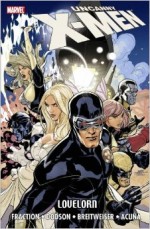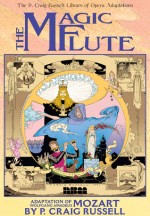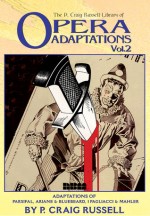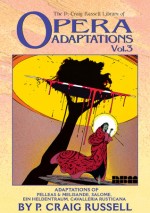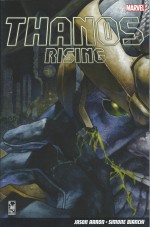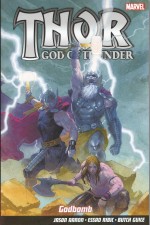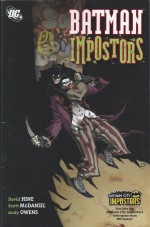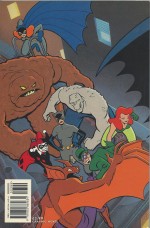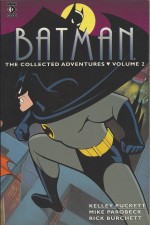
By Alan Fennell, Scott Goodall, Frank Bellamy, John Cooper, Eric Eden, Graham Bleathman & various (Egmont)
ISBN: 978-1-4052-6836-3
Win’s Christmas Gift Recommendation: 10/10 because it just is.
Stand By For Frothing!
Growing up in 1960’s England was the best of all possible worlds for a comic lover. As well as US imports you were treated to some frankly incredible weekly publications, and market bookstalls sold second-hand comics for at least a third of their cover price. We also had some of the greatest artists in the world working on some of the best licensed properties around. A perfect example is the TV – primarily Gerry Anderson – anthology comic TV Century 21.
For British kids of a certain vintage – it varies from eighty to four and three quarters – the Anderson experience is a large and critical component of the DNA of childhood. The TV episodes, toys, bubblegum cards, movies and especially the comic strips all irresistibly evoke and re-manifest the thrill and fevered anticipation of juvenile ecstasy in the millions of kids who enjoyed the weekly rush of mind-boggling, mouth-watering adventure – even decades after the initial hit.
Thus this latest glossy compilation, collecting some of the greatest strips in comics history is probably going to leave a lot of people gurgling in delight as they revisit or – if they’re incredibly lucky – see for the first time a spectacular panorama of futuristic fantasy thrills, spills and chills.
TV Century 21 (the unwieldy “Century†was eventually dropped) was patterned after a newspaper – albeit from 100 years into the future – and this shared conceit carried avid readers into a multimedia wonderland as television and comics fed off each other.
The incredible illustrated adventures were often supplemented with colour stills taken from the shows and photos also graced all text features and fillers which added to the unity of one of the industry’s first “Shared Universe†products. Even the BBC’s TV “tomorrows†were represented in a full-colour strip starring The Daleks.
The first issue launched on January 23rd 1965, instantly capturing the hearts and minds of millions of children and further proving to British comics editors the unfailingly profitable relationship between TV shows and healthy sales.
Filled with high quality art and features, printed in gleaming photogravure, TV21 featured such strips as Fireball XL5, Supercar and Stingray as well as a strange series about a posh future lady spy and her burglar chauffeur.
In an attempt to be topical, the allegorically Soviet and terribly totalitarian state of Bereznik was used in many strips, acting as an overarching, continuity-providing bad guy. Behind numerous plots and outrages, the TomorrowTerrorState constantly schemed against the World Government (for which read “The Westâ€) in an eerily advanced Cold War espionage scenario which augmented the aliens, aquatic civilizations, common crooks and cataclysmic disasters that threatened the general well-being of the populace.
Although Thunderbirds did not premiere on TV until September of that year (with Frank Bellamy’s incredible strip joining the comic’s line-up in January 1966 with #52) Lady Penelope and Parker (subtitled as and promising “Elegance, Charm and Deadly Dangerâ€) had been running since issue #1.
The aristocratic super-spy was promoted to her own spin-off, top-class photogravure publication in January 1966 – just as Anderson’s newest creations launched into super-marionated life: their comics exploits becoming the big draw in the already unmissable TV21.
All that is further explained in an expansive ‘Introduction’ before the procession of weekly wonderment – two staggeringly intoxicating pages every seven days! – begins in this massive (290 pages, 297x222mm) full-colour luxury hardback.
It all begins with the thirteenth adventure, which ran from #141-146 (30th September to November 4th 1967, scripted by Scott Goodall and illustrated by Frank Bellamy) and details how an avaricious madman intends splitting Persia in two with ‘The Earthquake Maker’.
The unforgettable alien invader story ‘Visitor from Space’ (#147-154) follows, with one of the most memorable monsters in comics history stealing the show on every page, after which ‘The Antarctic Menace’ (6th January-17th February 1968, #155 to 161) begins a brand new year with the same tried and true thrills as the Tracy boys are called in to save the day after the Australia-Antarctica highway is sabotaged!
‘Brains is Dead’ (#162-169, running until 13th April) features the skulduggery of the sinister Hood in a deadly game of industrial espionage, after which artist Graham Bleathman provides a captivating glimpse at those longed-for technical details with double-page cutaway spreads and single page strip sequences ‘Thunderbird 1 Technical Data’, ‘Launch Sequence: Thunderbird 1’, ‘Launch Sequence: Thunderbird 2’ and ‘Thunderbird 2 Technical Data’.
The suspenseful strip stories resume with ‘The Space Cannon’ (Goodall & Bellamy, from TV21 #170-172 April 20th to May 4th 1968) as the team have to stop a continually firing neutron cannon that’s crashed into the Thames, whilst follow-up yarn ‘The Olympic Plot’ by Howard Elson & Bellamy (#173-178) finds the great games – held in the crater of Vesuvius – disrupted not only by a lake of fire but also a madman digging up a pirate treasure hidden since the 17th century…
TV21 #184-187 (27th July-17th August 1968) offered ‘Devil’s Crag’ (Goodall & Bellamy) and saw International Rescue save a lost schoolboy; a spectacular visual extravaganza that belies its deceptively simple plot, after which ‘The Eiffel Tower Demolition’ (#188-191) goes dreadfully wrong and Scott and Virgil find themselves endangered by thieves and saboteurs…
Bleathman returns with more pictorial top secrets in ‘Specifications of Thunderbird 3’, ‘Launch Sequence: Thunderbird 3’, ‘Launch Sequence: Thunderbird 4’ and ‘Specifications of Thunderbird 4’ after which Goodall & Bellamy expose ‘The Nuclear Threat’ (TV21 #192-196, 21st September-19th October 1968) of an out-of-control drone ferrying atomic weapons to their intended deep sea dumping ground, whilst the ‘Hawaiian Lobster Menace’ (#197-202) outrageously reveals a plot to turn tasty crustacean treats into explosive anti-personnel weapons…
‘The Time Machine’ (December 7th 1968 to January 11th 1969) used by Jeff and Scott Tracy malfunctioned in a most unfortunate manner, whilst from #209-217 a more domestic disaster saw ‘The Zoo Ship’ which foundered off Tracy Island lead to crewmen trapped aboard ship and savage beasts loose on shore with our harried heroes trying to save lives whilst keeping their secrets safe from the ever insidious Hood…
Bleathman has more artistic innovations to display in ‘Specifications of Thunderbird 5’, ‘The Construction of Thunderbird 5′, ‘This is Tracy Island’ and ‘Tracy Island’ giving us all the detail and data we desire before ‘City of Doom’ (Goodall as “Spencer Howard†& Bellamy from #218-226, 22nd March to May 17th) finds a top secret, ultra-futuristic Andean science metropolis endangered by a wild nuclear reaction…
Scripted by Goodall or (perhaps John W. Jennison?), ‘Chain Reaction’ ran in TV21 and TV Tornado #227-234, May 24th-12th July 2069) wherein the Tracy team had to stop an out of control 50,000-ton space freighter from impacting in the middle of San Francisco – and that’s just the start of an epic calamity which threatened to destroy the entire Pacific Rim…
There’s a big jump here to October 1968 for ‘The Big Bang’ by Geoff Cowan & John Cooper, possibly explained by the fact that once Bellamy left the strip, his cruelly underrated replacement rendered the strip in black and white. When Fleetway revived the Anderson franchise in the early 1990s the comics featured artwork from TV21 supplemented with new original material from another generation of fans and creators, but as Thunderbirds was far and away the biggest hit, some of Cooper’s strips were reprinted with the artist at last getting the chance to colour his efforts.
Thus this, his second original yarn from TV21 & Joe 90 #5-8 (25th October-15th November 1969), involving smuggled diamonds and a boy trapped on a building both sinking and about to explode…
The endeavours of the Tracy clan then conclude with ‘The Mini Moon’ (Richard O’Neill & Cooper (TV21 & Joe 90 #22-28, 21st February to April 4th 1970) as a roving planetoid menaces Earth and Brains, Alan and Gordon have to blow it up while it’s still far enough away to pose no extinction-level threat…
Happily there’s still plenty for fans to enjoy as, after Bleathman’s revelatory ‘The Secrets of FAB 1’ and Creighton-Ward Stately Home’, the adventures of Lady Penelope and her invaluable manservant Parker begin with ‘Mr. Steelman’ by Alan Fennell & Eric Eden. Originally seen in TV Century 21 #1-11, January 23rd to April 3rd 1965, this is a complex thriller involving espionage and a deadly robot, after which Bellamy handles ‘The Isle of Arran Riddle’ (#35-43, September 18th to November 13th 1965) wherein the Honourable Lady Creighton-Ward attempts to solve an ancient puzzle and inherit a fabulous ruby.
Eden returned for ‘The Vanishing Ray’ (#44-51) as the stately spy was mysteriously sent a torch that turned objects transparent, unaware that the wicked Hood was hot on its trail.
The deadly games end with ‘The Enemy Spy’, illustrated by the legendary Frank Hampson from the July 1965 Lady Penelope Summer Extra, wherein an idle glance at the TV news sets Her Ladyship on the trail of Bereznik’s top assassin…
But of course the real treasure is the phenomenal and unparalleled work of Frank Bellamy, whose fantastic design, drawing and painted colour (which holds up rather well here, despite the limitations of modern print technology to accommodate the subtleties of the photogravure process) steals the show – and usually one’s breath away!
The work of Bellamy and his successors are a cherished highpoint of British comic-making. Crisp, imaginative writing, great characters and some of the very best science-fiction art of all time make this a must-have book for just about anybody with a sense of adventure and love of comics. It doesn’t get better than this.
Thunderbirds ™ and © ITC Entertainment Group Limited 1964, 1999, 2013. Licensed by ITV Ventures Limited. All rights reserved.



